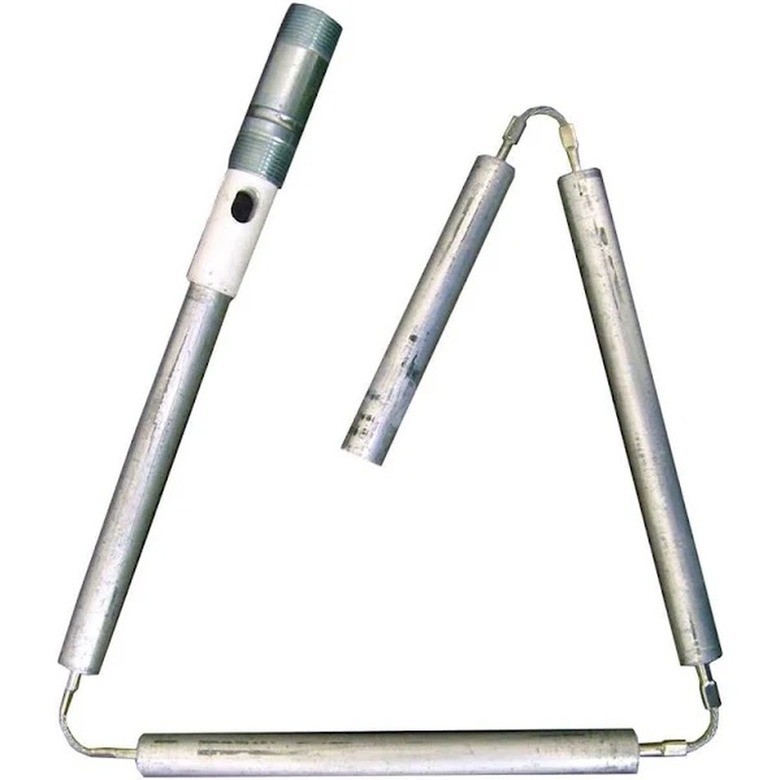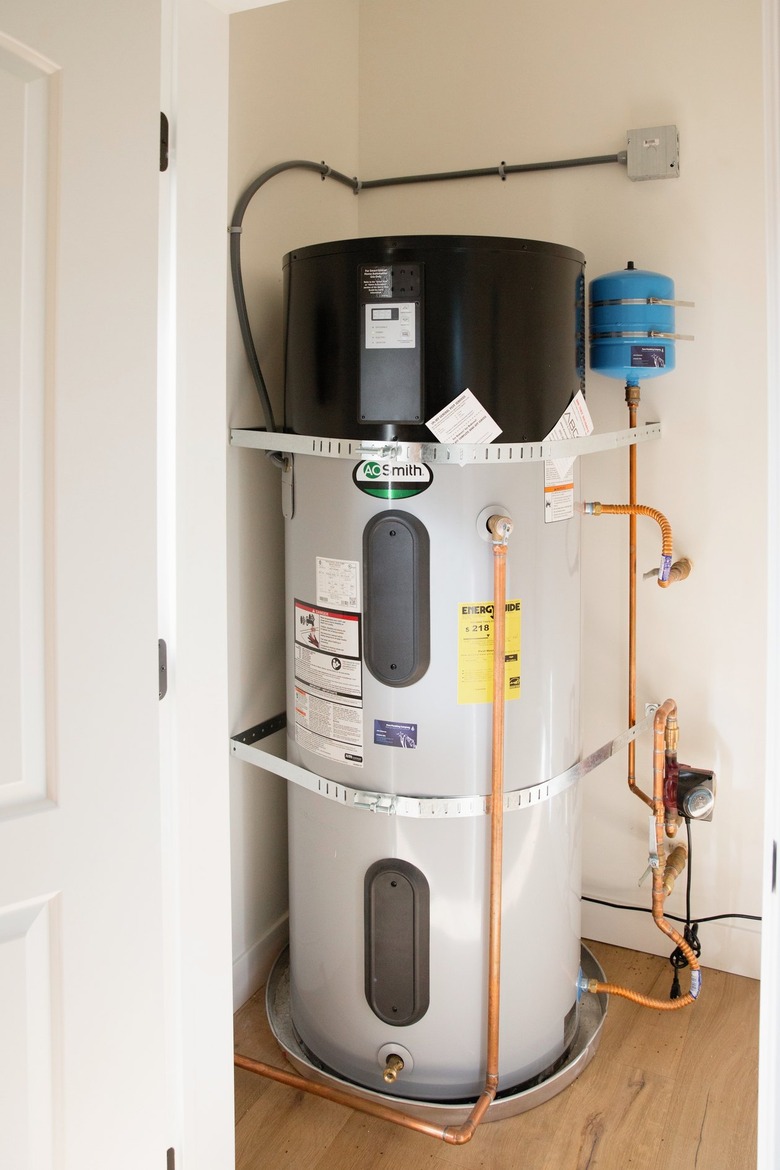Water Heater Anode Rod: What It Is And How To Replace It
We may receive a commission on purchases made from links.
It's important to replace the anode rod in a water heater periodically, but it's a rare homeowner who even knows what an anode rod is let alone how to replace one. That's unfortunate because performing this simple maintenance task is as important as flushing the tank periodically. It can lengthen the life of a water heater by several years — perhaps even double it — and failing to perform it can void the water heater warranty.
An anode rod is designed to corrode and disintegrate inside the water heater tank because by doing so, it spares the metal tank liner from the same fate. It literally sacrifices itself for the sake of the tank liner, which is why it's also known as a sacrificial rod.
Replacing an anode rod is not a complicated job, and you don't need a plumber. You may need to buy or rent an impact wrench, though, because the factory tightens the rod into the tank very tightly, and if you try to loosen it using muscle alone, you could move the tank and break a water connection. Getting the old rod out is the toughest part of the procedure. Installing a new rod is a snap, and if you don't screw it into the tank as tightly as it was screwed in at the factory, the job will be that much easier the next time you replace it.
What Is a Water Heater Anode Rod?
What Is a Water Heater Anode Rod?
An anode rod is a metallic rod 3 or more feet long and about 1 1/4 inches in diameter that sits immersed in the water inside the water heater tank. It has a screw cap on one end that fits the threads of an opening in the top of the tank. Most rods are solid, but some are flexible and collapse into several sections, which allows you to insert them and pull them out of tanks that are sitting under shelves or a low ceiling.
A sacrificial anode rod is made of metal that has a higher electrochemical potential than the metal that lines the tank, so it loses electrons to ions in the water faster than the steel liner does, leaving fewer ions to react with the liner. By preferentially exchanging electrons with ions in the water, the anode rod corrodes quickly while protecting the tank liner from rust and corrosion.
Sacrificial anode rods are usually made of magnesium or aluminum plated around a steel core. Both of these metals corrode faster than steel, although magnesium corrodes quicker, and once the rod corrodes completely, the tank will begin to rust. To prevent this, an anode rod should be replaced every three to five years. Some anode rods are made of titanium and deliver a small DC current to the water to charge it. These rods are nonsacrificial; they don't corrode and never need to be replaced.
How to Know You Need a New Anode Rod
How to Know You Need a New Anode Rod
There's no outward indication of a depleted anode rod, so after about five years, you should simply assume you need one. If necessary, you can perform a visual inspection by following the procedure for removing it without actually doing so. The rod is still serviceable if the surface material hasn't corroded completely, and it isn't completely caked with calcium and hard water deposits that prevent the metal from corroding.
You might want to replace an anode rod that hasn't corroded if you notice sulfurous odors in the hot water. This can be caused by the reaction between a magnesium anode rod and impurities deposited in the water by a water softener installed before the water heater. Installing an aluminum anode rod in place of the magnesium one usually alleviates the odor problem.
How to Replace a Water Heater Anode Rod
How to Replace a Water Heater Anode Rod
The anode rod is inserted through an opening in the top of the water heater tank. On most models, a cap with a hex head nut is plainly visible, but some manufacturers hide this nut underneath a plastic cap that you have to first remove.
1. Shut Off the Water Heater
If you have an electric water heater, shut off the breaker in the home's service panel. If you have a gas water heater, turn off the gas control on the water heater and then shut off the valve on the gas supply line. Shut off the cold water supply line to the water heater and then open a hot water faucet in the house to relieve pressure in the tank.
2. Partially Drain the Tank
Open the drain valve on the bottom of the hot water tank and drain about 5 gallons of water. Don't drain any more than this because the weight of the water will help stabilize the tank while you unscrew the anode rod. The water in the tank is hot, so to prevent scalding, it's a good idea to attach a garden hose to the drain valve and let the water drain into a laundry sink or the outdoors. You can also use a bucket.
3. Unscrew the Anode Rod
This is the toughest part of the procedure, and there are two ways to do it. If you have an impact wrench, use that along with a 1 1/16-inch socket. Place the socket over the hex nut and operate the wrench in reverse to loosen it. You can also use a manual socket wrench with a 1 1/16-inch socket, but you'll probably need more leverage than the short handle gives you. Get leverage by fitting a 2-foot length of 1-inch steel pipe onto the handle. If the hot water heater isn't strapped to the wall, you might need someone to help you brace it to prevent it from moving and breaking one of the water connections.
4. Pull Out the Old Anode Rod
Once the screw connection is loose, you should be able to lift the old anode rod right out of the tank. If there isn't enough clearance above the tank to get it all the way out, cut it with a hacksaw. When cutting, be sure to hold the lower half securely to prevent it from falling back into the tank.
5. Drop In the New Anode Rod
Wrap thread seal tape clockwise around the threads of the new anode rod, feed the anode rod in through the opening in the tank, and tighten down the screw fitting. If you don't have enough clearance for a solid rod, purchase a flexible one that collapses into several sections.
6. Turn On the Water and Fire Up the Water Heater
Make sure all the hot water faucets in the house are off and then turn on the cold water inlet valve to the water heater. Flip on the breaker to start up your electric water heater. If you have a gas water heater, turn on the gas supply valve and relight the pilot on the water heater.

